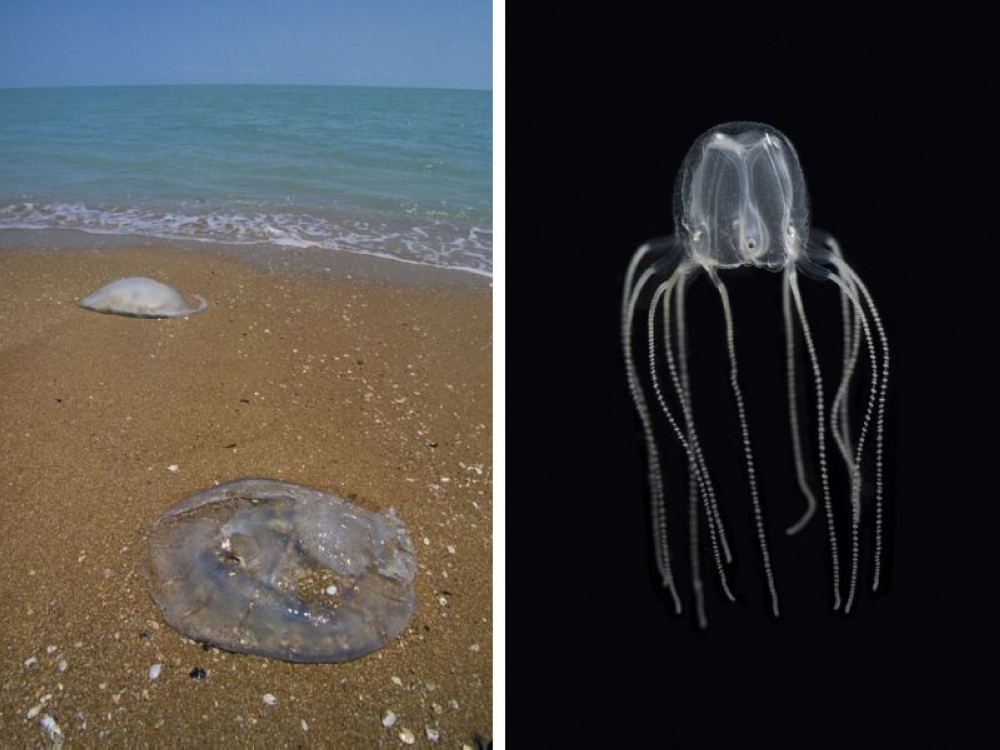KUALA LUMPUR Nov 21 — The combination of sun, sand and sea sounds like the perfect holiday, but there are some dangers you should watch out for at the beach, especially if you are with young children.
Local media reported a two-year-old Russian boy died yesterday after being stung by a box jellyfish while paddling in shallow water at Pantai Cenang in Langkawi, Kedah.
This comes after a seven-year-old girl died from a box jellyfish sting off Pantai Sawangan in Kota Kinabalu, Sabah back in August.
Box jellyfish stings, while not always common, can be deadly, especially to children.
Here’s what you need to know about box jellyfish — what they are, how dangerous they can be, where in Malaysia they are found, and how to survive a sting.
What is a box jellyfish?
A box jellyfish is a jellyfish with a body (called the bell) shaped like a cube, not round.
From each corner of that cube come long, thin tentacles.
These tentacles carry thousands of tiny cells called nematocysts, which can fire venom when they touch skin.
There are about 50 known species of box jellyfish worldwide.
Some are very dangerous, such as multi-tentacled species in the genus Chirodropid.
Smaller box jellyfish from other families, like the Carybdeids, can still cause serious stings.
In Malaysia, box jellyfish waters can be found in waters off peninsular Malaysia – that includes Langkawi – and Sabah.
According to the Kedah Fisheries Department, the number in Langkawi this year is moderate, but even a few can be dangerous.
They can be carried closer to shore by sea current changes during monsoon transitions or by freshwater runoff after heavy rain.
Why are box jellyfish dangerous and how lethal can they be?
Certain box jellyfish carry very powerful venom that can attack a person’s heart, nerves, and skin.
When someone is stung, symptoms can include intense pain, rash, nausea, cramps, sweating, and heart or breathing problems.
In Malaysia, fatal stings have been reported twice this year so far:
November: Two-year-old Russian boy in Langkawi, Kedah.August: Seven-year-old girl in Kota Kinabalu, Sabah.
A study published in the Journal of Travel Medicine in July 2011 by the International Society of Travel Medicine reported three fatal box jellyfish stings in Malaysia between 2000 and 2010, all involving tourists and linked to multi-tentacled (chirodropid) jellyfish.
How to recognise a box jellyfish
Its body is cube-shaped, not dome-like.Long, thin tentacles hang from each corner of the cube.Often almost transparent, making it hard to see.Dangerous species may have longer tentacles.
What to do if you encounter one or get stung
If you see a box jellyfish in the water:
Do not touch it. Even a light brush can sting.Get out of the water carefully.Warn others nearby.
If someone is stung:
Use household vinegar (white or rice vinegar) or 5-8 per cent acetic acid, to rinse the sting for at least 30 seconds. This stops the stinging cells from injecting more venom.Do not use urine. Despite popular myths, urine does not neutralise venom and may make stings worse.Call emergency help (999 in Malaysia) immediately.Keep the person calm, lay them down, and monitor their breathing and heart.At the hospital, doctors may use anti-venom, though not all hospitals in Malaysia carry it. After the Langkawi death, anti-venom had to be brought in.

